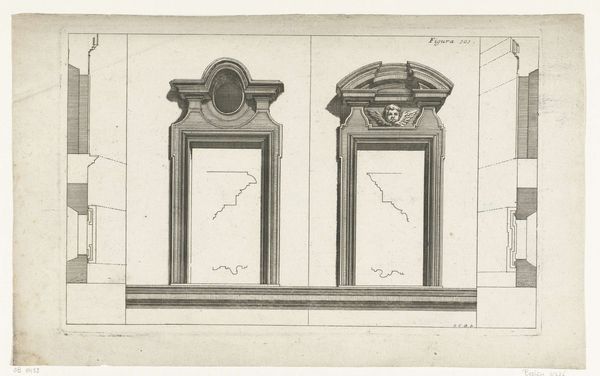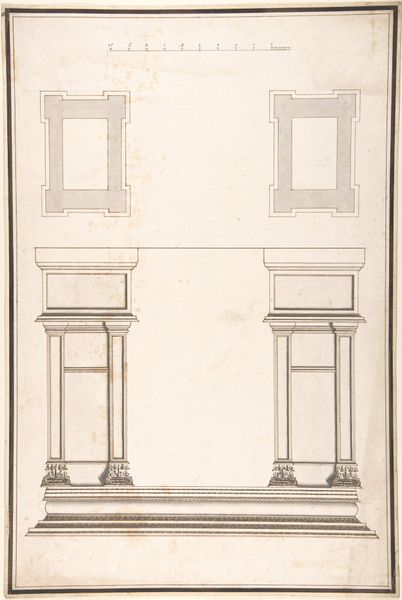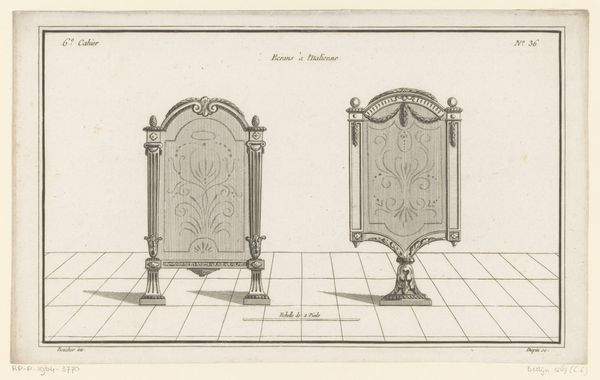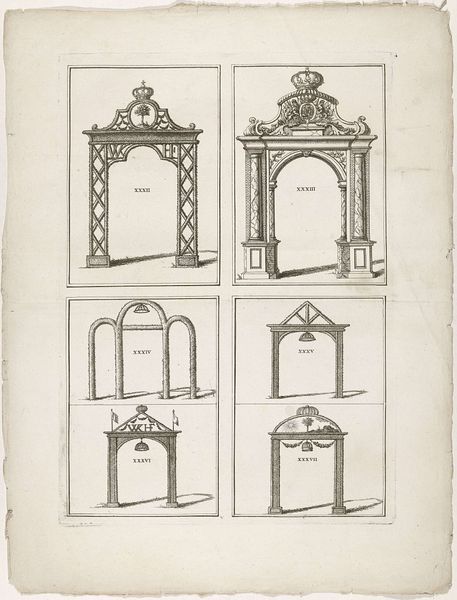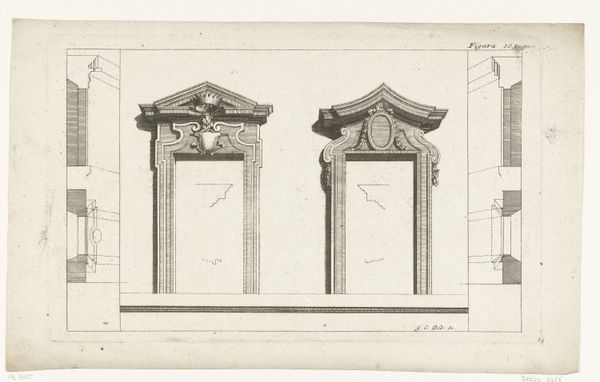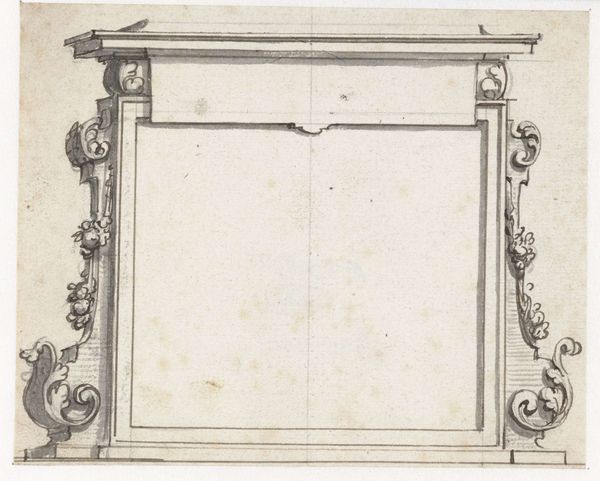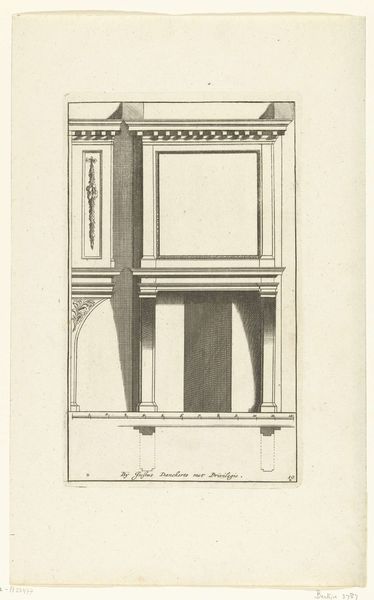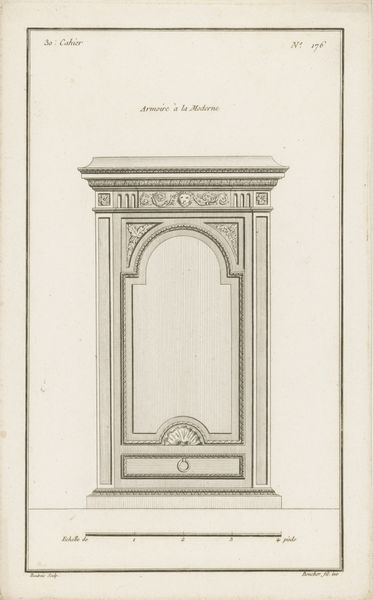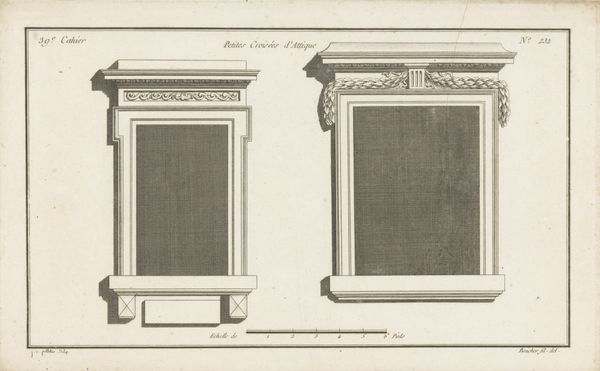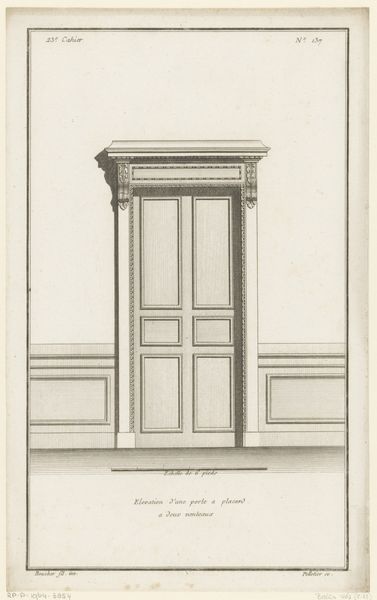
drawing, print, engraving, architecture
#
drawing
#
baroque
# print
#
etching
#
geometric
#
line
#
engraving
#
architecture
Dimensions: height 175 mm, width 278 mm
Copyright: Rijks Museum: Open Domain
Curator: I’m struck by the precision. There’s a clinical elegance to the linework in this etching. Almost like looking at a technical drawing for a dream home. Editor: Exactly! This engraving, created by Georg Conrad Bodenehr between 1708 and 1711, titled “Twee raamkozijnen”, or “Two Window Frames,” really captures a particular moment in Baroque architectural aesthetics. Look at how he contrasts the sharp angles with the swirling ornaments. Curator: I notice the emptiness within the frames—almost a challenge. Are we meant to imagine what vistas these windows might reveal? Or perhaps contemplate the act of viewing itself? It's interesting how each one offers a unique perspective, isn't it? One’s sharp, almost severe, while the other features a sweet cherubic figure overhead. The devil and the angel, overseeing how we view the world. Editor: That tension is precisely the point! The Baroque period was wrestling with these dichotomies all the time—order and chaos, the divine and the earthly. The window, historically, isn't just a source of light, it is a very public portal onto domestic, private lives, a reflection of status, controlled visibility for some while access denied for others. And the elaborate ornamentation, while seemingly decorative, really reinforced existing social hierarchies. Curator: So the more flamboyant your window dressing, the higher you stood on the ladder. But stripping it down, as this print almost does…doesn't that expose the naked structure beneath? There’s beauty in that stark simplicity, too. It is such a relief from so much fussy detailing. Editor: The Baroque love of detail served to mask real power imbalances, economic disparity. Seeing them side-by-side, perhaps Bodenehr wants us to question these assumptions—to choose how and what we want to view, and more critically, who gets to view us? The very idea of a window implicates who it excludes, it forces us to consider access, entry and looking onto our private space. Curator: I think I would have missed that nuance if you hadn't spelled it out for me. Art changes with our own vantage point, I guess! And now I see it, so thank you. Editor: My pleasure! Windows, like art, should always give us pause.
Comments
No comments
Be the first to comment and join the conversation on the ultimate creative platform.
